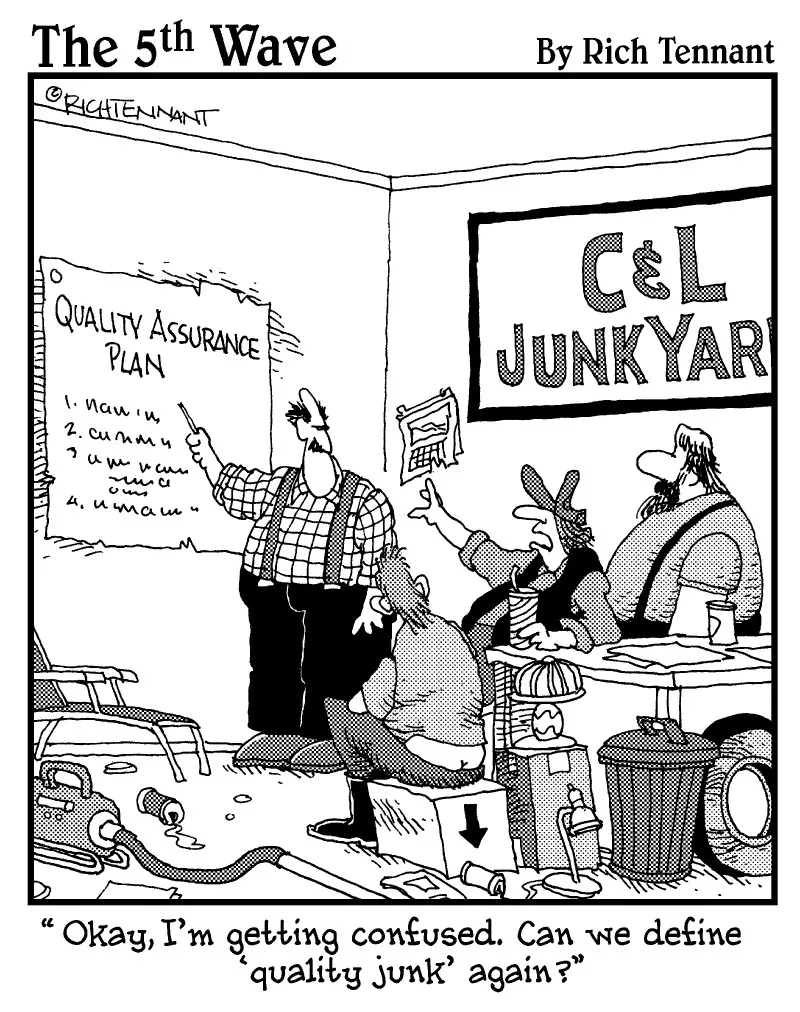
- English
- ePUB (mobile friendly)
- Available on iOS & Android
Quality Control for Dummies
About this book
So you've been asked to lead a quality control initiative? Or maybe you've been assigned to a quality team. Perhaps you're a CEO whose main concern is to make your company faster, more efficient, and less expensive. Whatever your role is, quality control is a critical concept in every industry and profession.
Quality Control For Dummies is the straightforward, easy guide to improving your company's quality. It covers all of today's available options and provides expert techniques for introducing quality methods to your company, collecting data, designing quality processes, and more. This hands-on guide gives you all the tools you'll ever need to enhance your company's quality, including:
- Understanding the importance of quality standards
- Putting fundamental quality control methods to use
- Listening to your customer about quality issues
- Whipping quality control into shape with Lean
- Working with value stream mapping
- Focusing on the 5S method
- Supplement a process with Kanban
- Fixing tough problems with Six Sigma
- Using QFD to win customers over
- Improving you company with TOC
This invaluable reference is written from an unbiased viewpoint, giving you all the facts about each theory with no fuzzy coverings. It also includes steps for incorporating quality into a new product and Web sites packed with quality control tips and techniques. With Quality Control For Dummies, you'll be able to speed up production, eliminate waste, and save money!
Frequently asked questions
- Essential is ideal for learners and professionals who enjoy exploring a wide range of subjects. Access the Essential Library with 800,000+ trusted titles and best-sellers across business, personal growth, and the humanities. Includes unlimited reading time and Standard Read Aloud voice.
- Complete: Perfect for advanced learners and researchers needing full, unrestricted access. Unlock 1.4M+ books across hundreds of subjects, including academic and specialized titles. The Complete Plan also includes advanced features like Premium Read Aloud and Research Assistant.
Please note we cannot support devices running on iOS 13 and Android 7 or earlier. Learn more about using the app.
Information
Part I
Understanding the Basics of Quality Control

Chapter 1
Defining and Explaining Quality Control
In This Chapter










Looking at Different Definitions of “Quality”
A customer-based definition of quality

The statistical definition of quality
Setting Quality Standards

Table of contents
- Title
- Contents
- Introduction
- Part I : Understanding the Basics of Quality Control
- Chapter 1: Defining and Explaining Quality Control
- Chapter 2: Understanding the Importance of Quality Standards
- Chapter 3: Using Quality Assurance for the Best Results
- Chapter 4: The Role of Inspection in Quality Control
- Part II : Putting Fundamental Quality Control Methods to Use
- Chapter 5: Starting Down the Road to Quality
- Chapter 6: Detecting the Voice of the Customer in Quality Issues
- Chapter 7: Preparing to Measure Your Current Quality Process
- Chapter 8: Collecting Your Quality Data
- Chapter 9: Evaluating Quality with Statistics
- Chapter 10: Assessing Quality with Statistical Process Control
- Part III : Whipping Quality Control into Shape with Lean Processes
- Chapter 11: Gathering the Nuts and Bolts of Lean Processes
- Chapter 12: Keeping Your Eyes on the Process: Value Stream Mapping
- Chapter 13: Focusing on the 5S Method
- Chapter 14: Empowering Workers to Make Changes with Rapid Improvement
- Chapter 15: Looking at Lean Materials and Kanban
- Part IV : Surveying Other Quality Control Techniques
- Chapter 16: Combining the Best of All Worlds in Total Quality Management
- Chapter 17: Fixing Tough Problems with Six Sigma
- Chapter 18: Delving into Quality Function Deployment
- Chapter 19: Considering the Theory of Constraints
- Part V : The Part of Tens
- Chapter 20: Ten Steps for Incorporating Quality into a New Product and/or Process
- Chapter 21: Ten (Or So) Web Sites with Quality Control Tips and Techniques
- : Further Reading